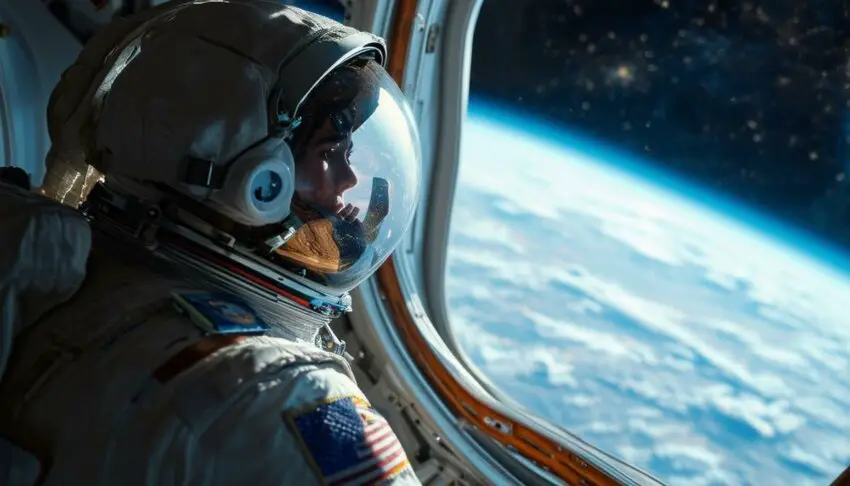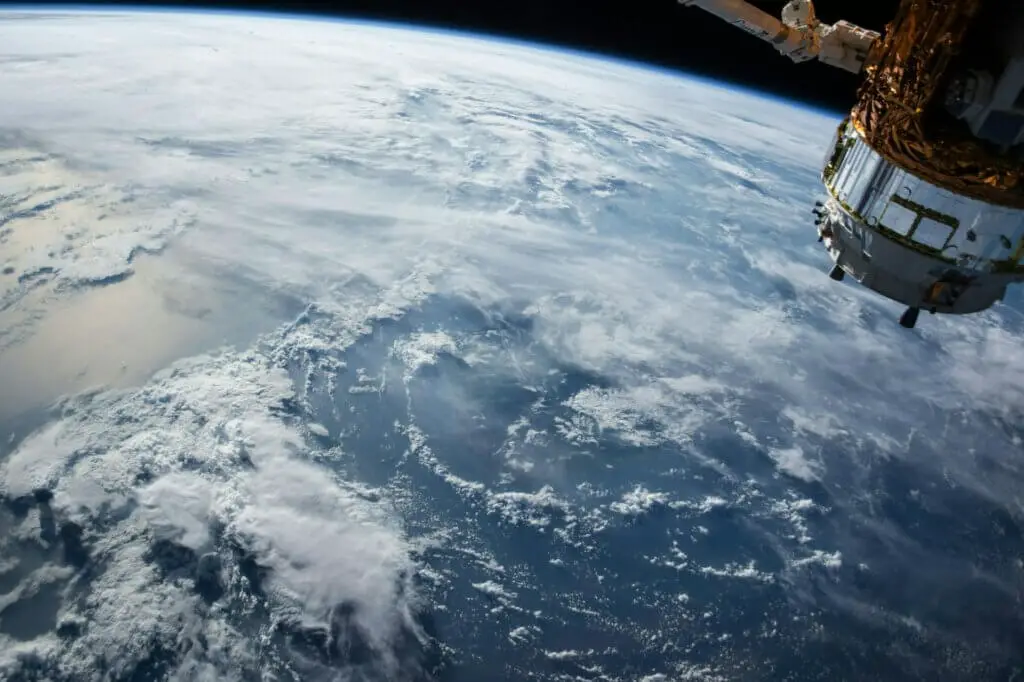We may earn money or products from the companies mentioned in this post.
The State of Space Tourism
Space tourism is no longer a distant dream but an emerging reality. Companies like Virgin Galactic, Blue Origin, and SpaceX are pushing the boundaries of what was once considered impossible. These advancements bring with them not only new opportunities but also significant challenges and considerations. As we stand on the cusp of this new era, it’s crucial to understand both the potential and the hurdles that lie ahead.
Current State:
Space tourism has witnessed significant advancements in recent years. Major players have actively driven this new frontier. Virgin Galactic has been dedicated to making space tourism accessible. The company has completed four successful flights, offering a 2.5-hour journey that includes six minutes of weightlessness. Passengers can expect breathtaking views through panoramic windows as they reach altitudes over 300,000 feet. Despite setbacks, the demand remains strong, with over 700 confirmed customers waiting to embark on this unique adventure.
Blue Origin, founded by Jeff Bezos, boasts an impressive record. The company’s New Shepard spacecraft has flown 32 passengers to space, along with several uncrewed flights carrying scientific payloads. Blue Origin’s vehicle launches vertically like traditional rockets, and passengers experience an 11-minute flight, floating in weightlessness and peering out at Earth through the largest windows in spaceflight history. SpaceX takes a different approach, focusing more on orbital flights. The company has revolutionized the industry with its reusable rockets. Notable missions include Inspiration4, the first all-civilian mission to orbit, and the Ax-1 mission, sending four civilians to the International Space Station (ISS) for an eight-day stay.
Suborbital flights with companies like Virgin Galactic and Blue Origin range approximately from $50,000 to $450,000 per seat. Orbital flights are far pricier, with tickets reaching tens of millions of dollars. Despite the cost, there’s no shortage of interest. A 2022 survey found that 38% of luxury travelers expressed interest in space flights, with the figure soaring to 58% among those aged 16-34.
Technological innovations propel space tourism forward. Virgin Galactic’s VSS Unity, Blue Origin’s New Shepard, and SpaceX’s Crew Dragon each mark significant strides in reusable spacecraft. These advancements align with their goal to reduce the environmental impact and make space tourism more sustainable.
Beyond offering joyrides, these companies set their sights higher. Blue Origin and SpaceX have secured substantial government contracts to support their endeavors. NASA’s Commercial LEO Development Program funds the development of private space stations, which aim to host professional astronauts and commercial visitors alike, projected to launch by the decade’s end.
This era of space tourism is not limited to American companies. Zero 2 Infinity in Spain offers a more serene option, planning high-altitude balloon flights to the stratosphere. Space Perspective is preparing to take its first passengers to the edge of space by 2024, launching from Florida, providing tourists with a more leisurely ascent using high-tech balloons. As of now, space tourism is still largely the domain of the super-rich, but the steady progress in technology and decreasing costs paint an optimistic picture for broader accessibility in the future. Companies are gearing up to make space travel more routine, pushing boundaries and inspiring new generations.
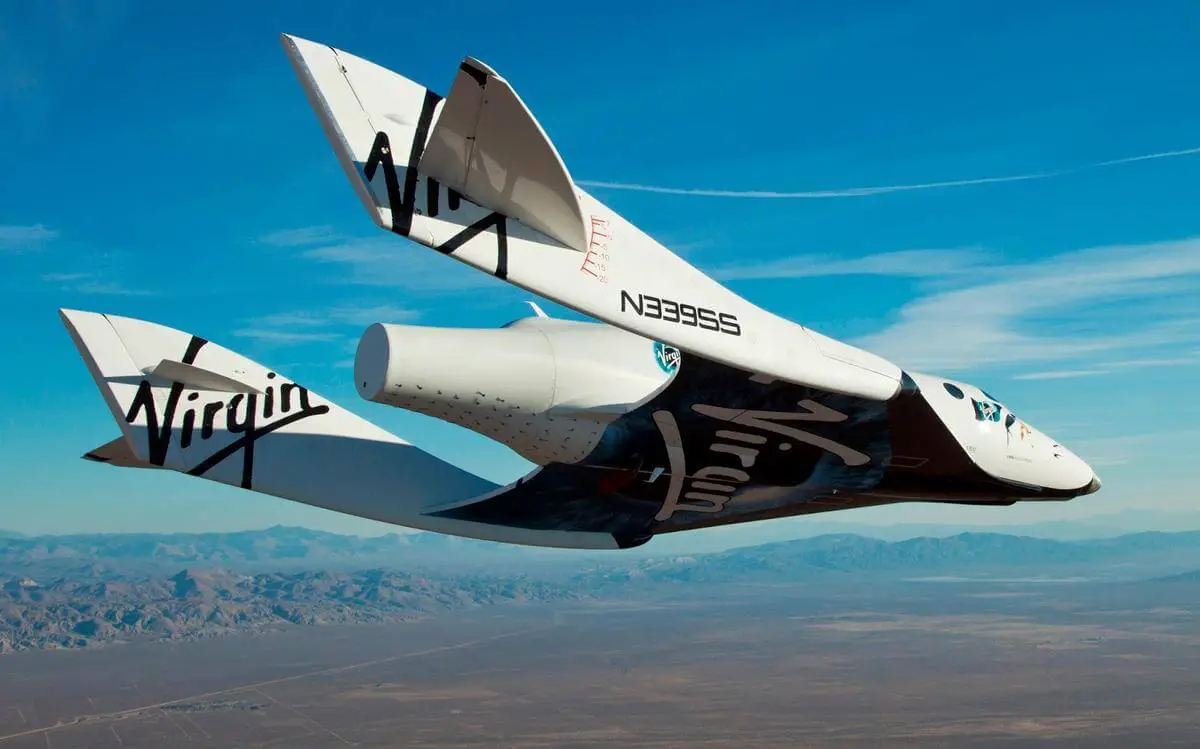
Economic and Societal Impacts
The economic benefits of space tourism are multifaceted and promising. The burgeoning industry has already begun to create numerous job opportunities, from engineers and technicians to administrative and hospitality roles. Investment in infrastructure, such as launch facilities and spaceports, further drives local economies. Space Florida’s collaboration with Space Perspective exemplifies such synergistic partnerships, boosting the local aerospace industry’s profile, creating jobs, fostering technological innovation, and spurring economic growth in the region.
Investment in space tourism infrastructure extends to manufacturing hubs, research centers, and even potential space hotels. The commercial space stations funded by NASA’s Commercial LEO Development Program showcase how governmental support can ignite private sector growth and innovation. These stations are expected to facilitate not just tourism, but scientific research, manufacturing, and other commercial activities in low Earth orbit.
The projections for the space tourism market growth are commendable. As of 2022, the global space tourism market was valued at approximately $695.1 million, with expectations to reach $8.67 billion by 2030. This exponential growth suggests a strong demand and a lucrative industry poised for expansion. Rapid advancements in technology, such as reusable rockets and spacecraft, are pivotal in driving down costs and making space travel more accessible to a broader audience. Reinvested revenues could fund further advancements in space exploration and technology, from Mars missions to space-based solar power generation.
The societal impacts of space tourism are just as significant as the economic benefits. Space tourism can catalyze a renewed public interest in space exploration. This enthusiasm could inspire a new generation of scientists, engineers, and astronauts, driving educational initiatives in STEM (Science, Technology, Engineering, and Mathematics). Schools and universities may incorporate more space-related content into their curriculums, and space tourism could even lead to more hands-on educational experiences, such as student experiments flown aboard commercial missions.
Global partnerships are another promising avenue. Space tourism companies often collaborate with international space agencies, scientific communities, and governmental bodies. Virgin Galactic’s agreements with partners in Italy and the United Arab Emirates show how space tourism can foster international cooperation. Such collaborations enhance the global knowledge base and distribute the economic and technological benefits more equitably worldwide.
The societal narrative around space tourism can shift perspectives and priorities. When private citizens experience the “Overview Effect”—the cognitive shift reported by some astronauts when viewing Earth from space—there’s potential for increased environmental awareness and advocacy. Observing Earth as a fragile, interconnected ecosystem can inspire a commitment to protecting our planet’s environment, both on an individual and a policy level.
Inclusivity remains a goal for the future. While currently a luxury for the wealthy, the ultimate vision for space tourism is to become accessible to a wider range of people. This democratization can play a significant role in driving social equity in space, ensuring that the benefits of space exploration and tourism are shared more broadly.
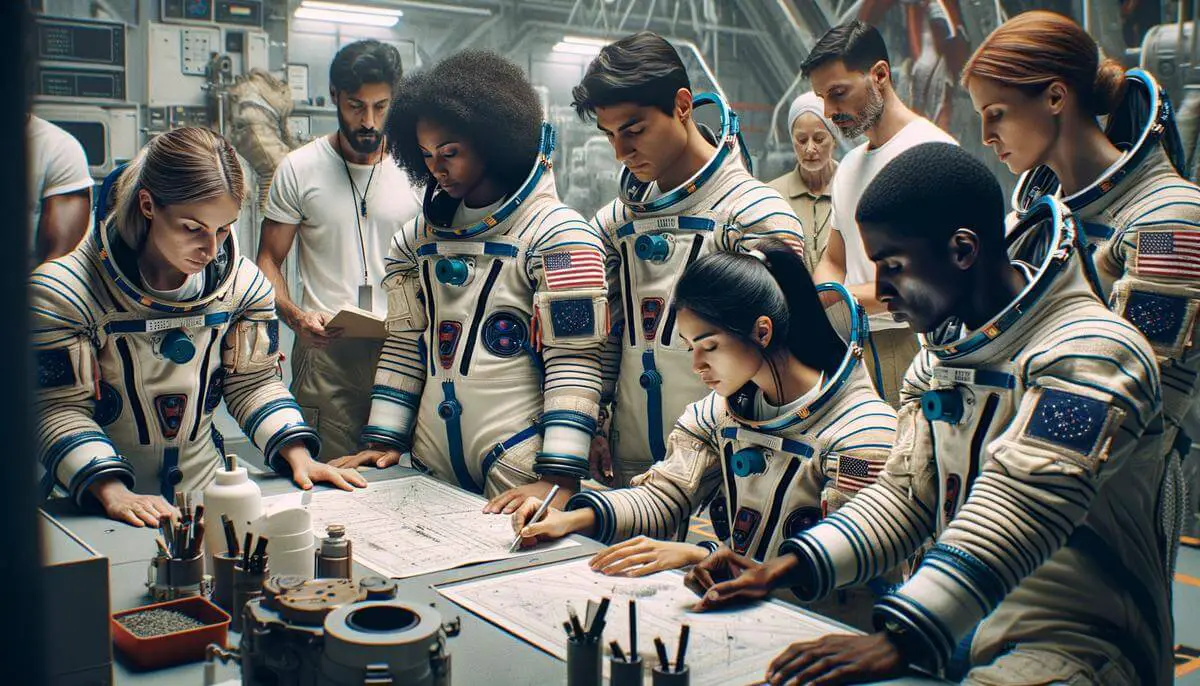
Environmental and Safety Concerns
The monumental advancements in space tourism also bring pressing environmental and safety concerns to the forefront. One of the most significant impacts is the carbon emissions generated by rocket launches. Traditional rocket launches consume vast amounts of fuel, emitting large quantities of carbon dioxide and other pollutants into the atmosphere. These emissions contribute to climate change and can have long-lasting effects on the upper layers of the Earth’s atmosphere. As space tourism scales up, the frequency of launches is likely to increase, making this an urgent issue to address.
Space debris poses significant risks to both manned and unmanned space missions. Each rocket launch contributes debris to the already cluttered space environment. Even small pieces of debris can cause catastrophic damage due to their high velocities. As the number of space tourism flights increases, so does the risk of collisions in low Earth orbit (LEO), potentially endangering both current and future missions.
To mitigate these environmental impacts, several measures are being explored:
- Advancements in rocket reusability, as evidenced by SpaceX’s Falcon 9 and Blue Origin’s New Shepard, play a pivotal role. Reusable rockets significantly reduce the need for new materials and manufacturing processes, thereby lowering the overall carbon footprint.
- Companies are investing in cleaner propulsion technologies, such as liquid hydrogen and oxygen, which produce water vapor as a byproduct instead of harmful pollutants.
- There is ongoing research into alternative fuels and propulsion systems that aim to be more eco-friendly.
Government oversight and regulatory frameworks are essential in ensuring the safety and sustainability of space tourism. In the United States, the Federal Aviation Administration (FAA) is responsible for overseeing commercial space launches. More rigorous environmental and safety regulations will likely be necessary as space tourism expands, to balance innovation with the long-term health of our planet and the safety of passengers.
Past accidents in the space tourism industry underscore the risks involved. The 2014 crash of Virgin Galactic’s SpaceShipTwo during a test flight tragically highlighted the potential dangers. Such incidents have prompted rigorous reassessments of safety protocols and engineering designs. Companies now implement redundant safety systems and more stringent testing phases before commercial flights.
Despite these strides, the learning curve for ensuring the safety of space tourists remains steep. Unlike traditional astronauts, private citizens lack the extensive training that professional crews undergo, making thorough safety briefings and simplified spacecraft operations crucial. Companies are also focusing on emergency protocols and rapid response strategies to handle any mid-flight anomalies. Continued collaboration with aerospace agencies and incorporating lessons from past missions are fundamental to improving safety standards.
Potential solutions to mitigate these issues include more comprehensive regulatory measures and international cooperation. NASA’s partnership with commercial entities through initiatives like the Commercial LEO Development Program shows how governmental support can drive industry-wide safety improvements. Global space agencies could collaborate to establish international guidelines for space debris management and environmental protection, ensuring a coordinated effort across nations.
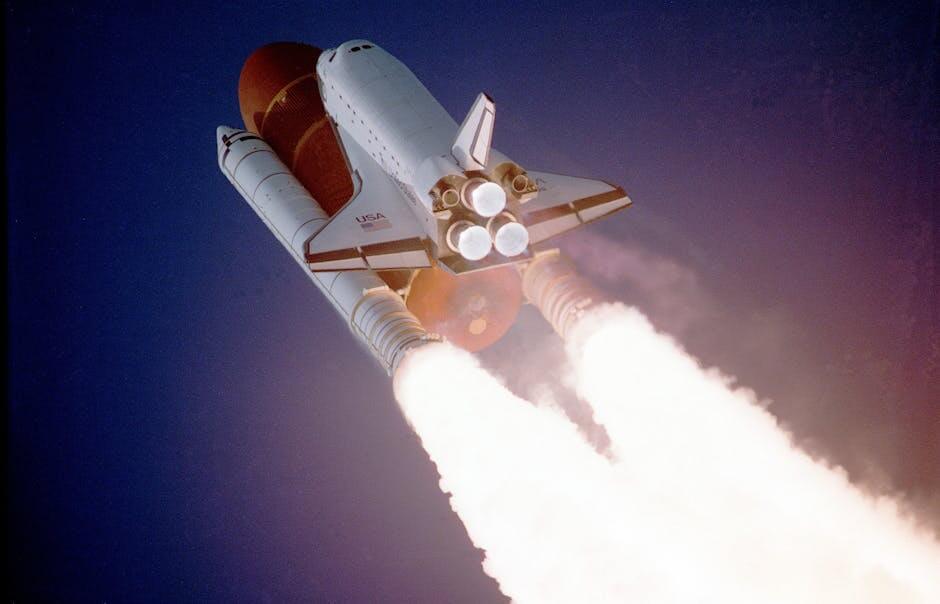
Future Prospects and Technological Innovations
As we look to the future, the potential evolution of space tourism is both exhilarating and expansive. Upcoming technologies and long-term plans from major companies suggest a paradigm shift in how we perceive and engage with space travel. This shift promises broader accessibility and deeper integration of space tourism into everyday life, though several technological and logistical challenges remain.
One of the most exciting prospects is the development of space hotels and private space stations. Companies like Axiom Space and Orion Span are leading the charge in this domain.
- Axiom is committed to building the world’s first commercial space station, with its first module expected to attach to the International Space Station (ISS) as early as 2024. This initial module will eventually detach and operate independently, offering accommodations for tourists, researchers, and other commercial entities.
- Orion Span’s Aurora Station also aims to provide stays in low Earth orbit (LEO), initially accommodating four tourists and two crew members.
These ventures could pave the way for a more permanent human presence in space, fostering an environment where space hotels become more conventional. Technological innovations play a crucial role in these ambitious plans. Advances in spacecraft reusability continue to be significant, with SpaceX’s Starship and Blue Origin’s New Shepard rockets exemplifying the strides made in this domain. Starship, designed for rapid reusability and interplanetary travel, aims to lower costs significantly. Its potential to carry up to 100 passengers on interplanetary missions represents a significant development for both tourism and space exploration.
Emerging technologies like advanced propulsion systems, on-orbit manufacturing, and AI-driven spacecraft management hold promise for enhancing the feasibility and safety of space tourism.
- Propulsion systems using ion thrusters, nuclear thermal propulsion, and potential breakthroughs in fusion drive technology could reduce travel times and increase spacecraft efficiency.
- On-orbit manufacturing, through initiatives like Made In Space, offers the potential to produce and repair necessary components directly in space, reducing the need for costly supply missions from Earth.
Private space stations also present opportunities for partnerships and commercial ventures beyond tourism. These habitats could host activities such as in-space manufacturing, biological research in microgravity, and media production. The potential for these stations to serve as hubs for international cooperation is significant, fostering collaborations between spacefaring nations and commercial interests.
The feasibility of more affordable space travel options is another critical area of focus. While current prices remain high, economies of scale and technological advancements are expected to bring costs down. Companies like Virgin Galactic and Blue Origin are working on making suborbital flights more cost-effective, while SpaceX aims to democratize orbital travel through projects like Starship.
However, several hurdles must be overcome to make these future prospects a reality. The high cost of development and risk of financial instability are significant challenges for many space tourism endeavors. Virgin Galactic’s recent financial struggles and bankruptcy filing, despite successful flights, highlight the market’s volatility. Robust investment and continuous funding are essential to sustain these pioneering projects.
Safety remains paramount, necessitating stringent safety measures, thorough testing protocols, and rigorous regulatory oversight. Past accidents underscore the importance of safety in commercial space travel, requiring the development of comprehensive emergency response systems and safety training for civilian astronauts. Regulatory bodies like the FAA and international counterparts must work closely with companies to ensure passenger safety and environmental sustainability.
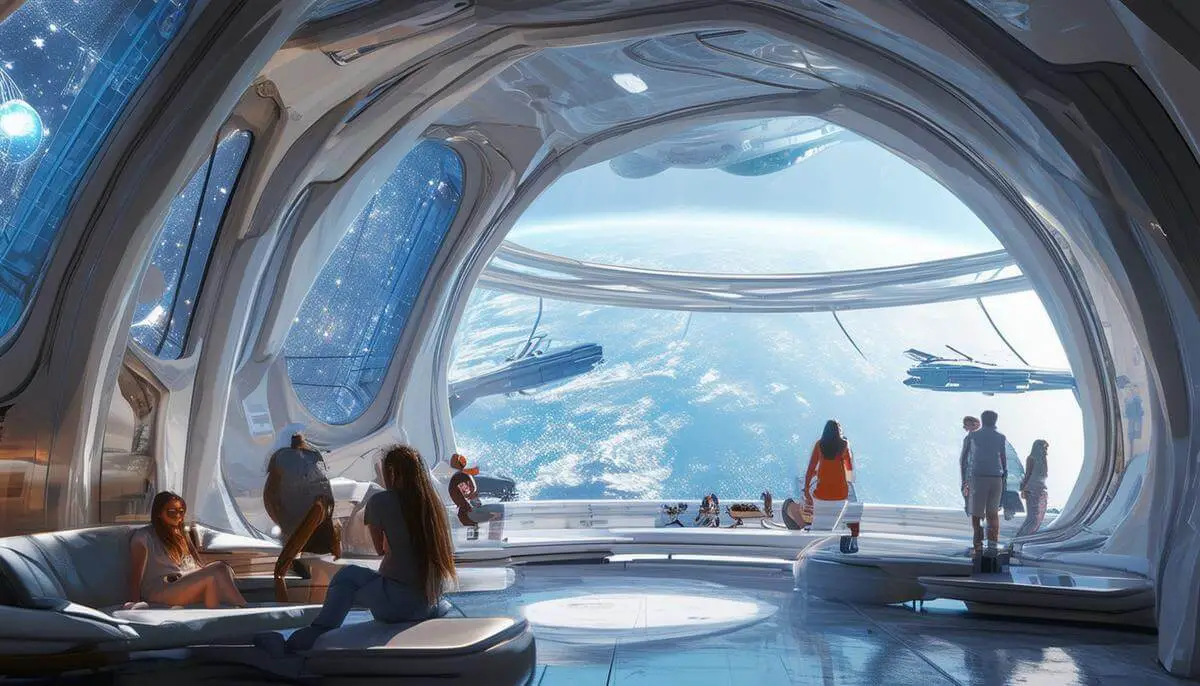
Infrastructure development is another challenge. Building spaceports and launch facilities capable of supporting a high frequency of flights requires considerable investment. Companies must also navigate regulatory landscapes across different countries as space tourism becomes a global enterprise. International cooperation and standardization of regulations can help streamline these processes, fostering an environment conducive to innovation and growth.
The future of space tourism holds great promise, driven by technological innovations and ambitious plans from industry leaders. The advent of space hotels, private space stations, and more affordable travel options could transform our relationship with space, making it an integral part of human experience. While significant challenges remain, the collaborative efforts of companies, governments, and international bodies are key to overcoming these hurdles. As we stand on the brink of this new frontier, the vision of a spacefaring society feels increasingly within reach. The journey towards making space a more accessible and routine destination is underway, and its realization promises to be a significant achievement of our time.
You Might Also Like – Starlink, Coming to Everywhere.

